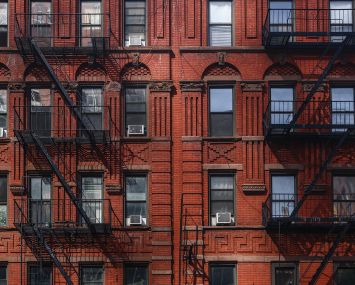What I Did With My Summer Vacation
By Robert Knakal October 19, 2020 11:07 am
reprints
While the title of this piece might sound like a writing assignment for a sixth grader (my daughter, Sophie, is a sixth grader and had to write one of these), there is a lot embedded in a task like that for an adult.
So, what did I do over the summer, or more accurately, since mid-March? I moved the family up to our country house in Connecticut and, after a couple of weeks, began to think of what I could do during the down time.
The level of calls I made to clients actually increased as there were no meetings to attend. A weekly goal of connecting with 50 property owners per week had all of a sudden averaged well over 80 per week and the concept of a traditional weekend went by the boards. I began to call clients on Sundays and started the conversation with, “Sorry for calling you on a Sunday.”
Most folks said: “Sunday, Wednesday, what’s the difference?”
If you are a reader of my frequent columns or messages to my clients, you know I have a tremendous affinity for statistics. But this also seemed like a good moment to examine the statistics in a more tactile way.
Over the years, I have sold 237 development sites in NYC consisting of approximately 25.5 million buildable square feet having an aggregate value of about $6.6 billion. When trying to figure out the value of a development site, we must make assumptions about what the market will look like a few years in the future when the new building will be delivered to the market.
There are several different sources, both public and private, that we look at to try to determine what that development pipeline looks like. Unfortunately, each of those sources provides data that varies widely. I always wanted to know what the pipeline consisted of but who has time to look at every building and every site in Manhattan?
Well, now the streets were empty.
I decided to make copies of the Sanborn tax lot map and drive/walk around neighborhoods of Manhattan with a bunch of different colored highlighters to identify sites under construction, potential single owner development sites and potential assemblages and highlight them on the maps.
We sometimes parked in the middle of the street to get out and walk around and there was no one behind us to get annoyed. In over five months and over 220 hours in the street, we were able to log every development site under construction in Manhattan south of 110th Street on the West Side and 96th Street on the East Side.
I have lived and worked in Manhattan for over 36 years but I found myself in places that I was completely unfamiliar with. I walked down streets with names like Jersey, Weehawken, Morris, Pedestrian, Fletcher, Mosco, Doyers, Edgar and Marketfield and looked at all 27,649 buildings in this section of Manhattan.
The result was we logged approximately 650 sites that are currently under construction. These range from Hudson Yards to a 10’ wide site at 210 East 52nd Street. We also identified over 600 sites that have land sizes of over 5,000 square feet where there is only one owner and the existing buildings are less than 25 percent of the potential buildable footage of that site. Within the next few weeks, all of this data will be processed and we will know how many office buildings are under construction and what the total buildable footage of those sites is. We will know how many hotels are under construction and how many hotel rooms this will add to the supply. We will also know how many rental apartments and condos are being constructed and how many square feet will be added to each of those categories.
Did I enjoy doing this? Absolutely! Some clients commented that most brokers, with as much tenure in the industry as I do would have had assistants do this work. No way! I was there to highlight every single site that is highlighted on our map. When the canvassing was done, I taped the map sections together and, today, our map is 27’ long and 12’ wide and is the best resource we could have to understand the development landscape in Manhattan and has enhanced our ability to forecast what sites will be ‘the sites of tomorrow’ and get ahead of the curve with regard to these opportunities.
As time moves on, we will reveal the other new and groundbreaking things we did during this unique time in the history of New York City commercial real estate.


